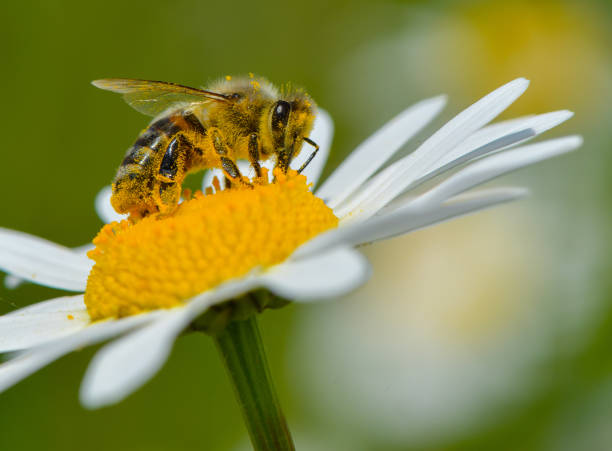Iowa State researchers survey endangered bee populace
Iowa State researchers discovered colonies of an endangered species of bees living in central Iowa, helping to prevent the species from going extinct.
Iowa State researchers discovered rare rusty patched bumblebees in Ames and Fort Dodge communities following a summer of research.
Amy Toth, a professor in ecology, evolution and organismal biology, and Anna Tucker, affiliate assistant professor in natural resource ecology and management, have begun their two and a half year research project on social insect biology. Their research is specially focused on social bees and wasps.
“So this is a mostly field based project, and we go around to a variety of different sites across the state of Iowa,” Toth said. “Essentially, we do surveys and look for the presence of rare and endangered bumblebees. We’re focusing on two species: one is the federally endangered rusty patched, and then the other is the declining American bumblebee.”
The eastern side of Iowa has been reported to have populations of the rusty patched bumblebee, both previously and through their team’s field studies this past summer. But, the finding of these bees in central Iowa has been good news for their research and hopes of the bee specie’s future.
“They might be important for conservation,” Toth said. “One of the concerns with an endangered species is that if the population is super small, they’re going to end up inbreeding and then that resulting loss of genetic diversity can actually lead to what’s called an ‘extinction vortex.’”
Toth said an extinction vortex is when the population of a species becomes so small that the lack of genetic diversity leads to later generations developing more health problems. The discovery of rusty patched bumblebees in central Iowa helps to ensure the species will have the necessary genetic variance.
Among the team is graduate student Kelsey Shepherd, a graduate student in natural resource ecology and management, who was one of the researchers who traveled the state doing surveys. The team found rusty patched bumblebees at only four of the 50 sites surveyed.
“What we did for the occupancy surveys was what’s called a rapid survey,” Shepherd said. “We surveyed for 30 minutes, and we’re just netting every bumblebee we saw, ID’ing it, and noting what species it was. At those same rapid surveys, we did a habitat survey, so we noted every flowering plant species and then some other habitat features.”
These surveys could help the team determine what bumblebee species were in the area and what particular environments these species can thrive in. The studying of the habitats is intended to help locate other rusty patched populations in the states and also to have a better understanding for conservation efforts for these bees.
The later survey efforts by the research team would be to collect the bees, do measurements on them in order to do a basic analysis, and release them back into their habitat. The current consensus by the research team is that the rusty patched bumblebees prefer forested areas with nearby rivers and prairies.
“We are hoping that we can continue to find them there,” Shepherd said. “It’s a really good sign; it means they’re surviving, and they might be even in places that we don’t know they are.”
The team’s next step is to do a further analysis on the bees’ health based on the measurements they found. Next summer, the team plans to target their research into the types of environments where they had success finding the rusty patched bumblebees.
Your donation will support the student journalists of the Iowa State Daily. Your contribution will allow us to purchase equipment, send our student journalists to conferences and off-set their cost of living so they can continue to do best-in-the-nation work at the Iowa State Daily.














Jean Cleverley | Oct 3, 2022 at 3:11 am
This article could have included more photos of the rusty patched bee for our identification.